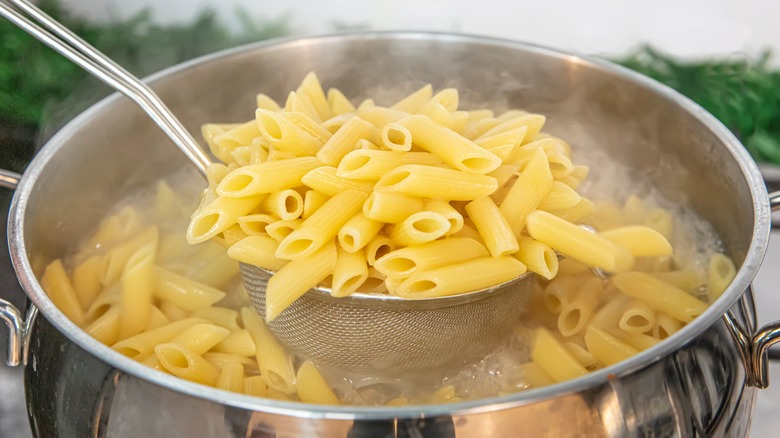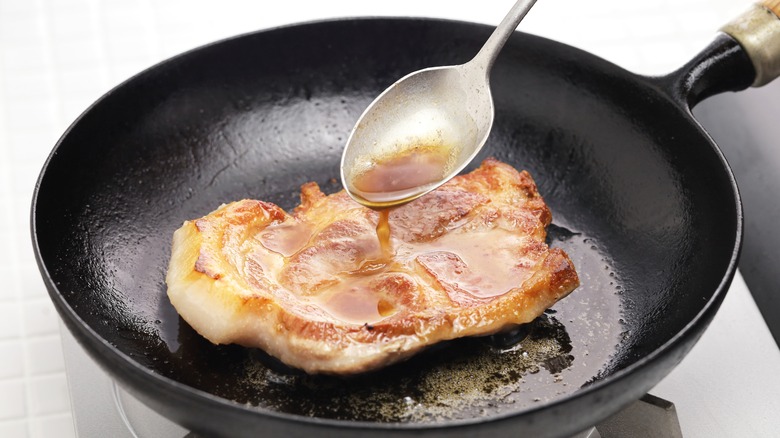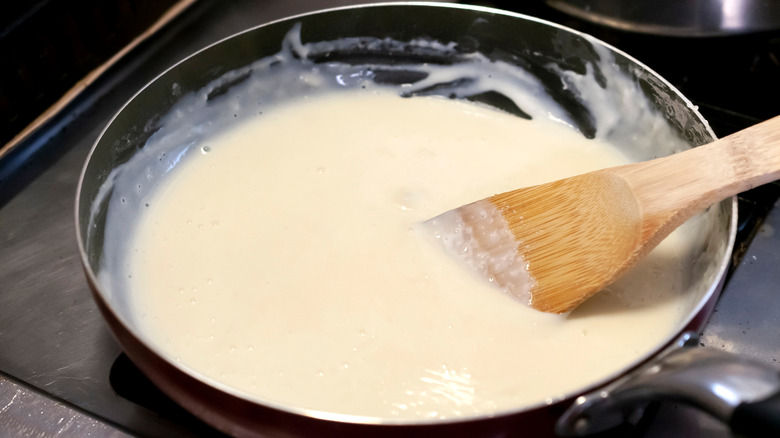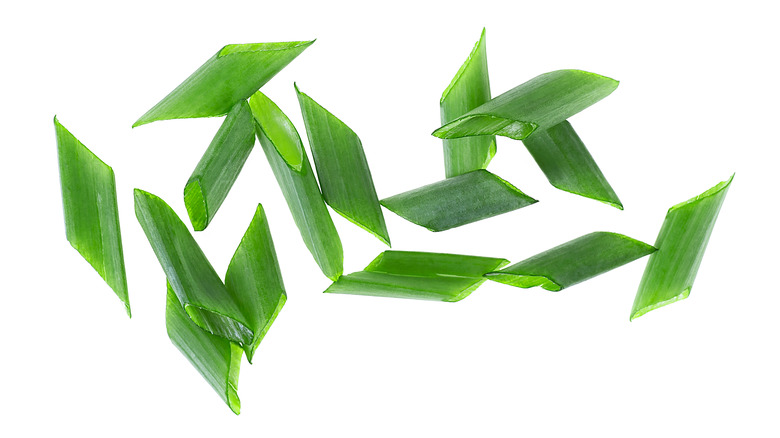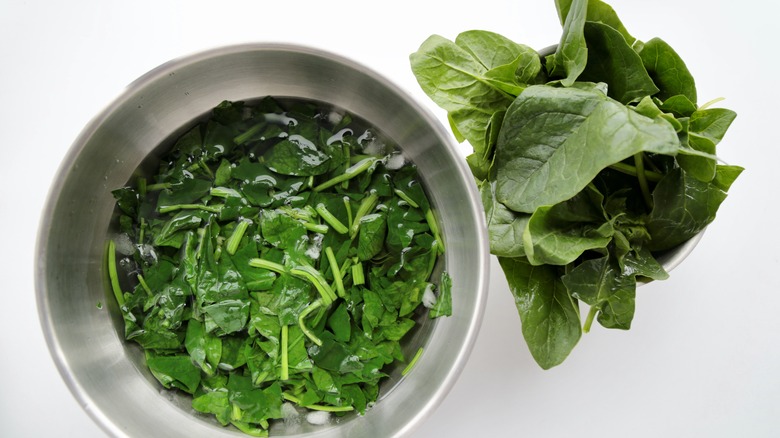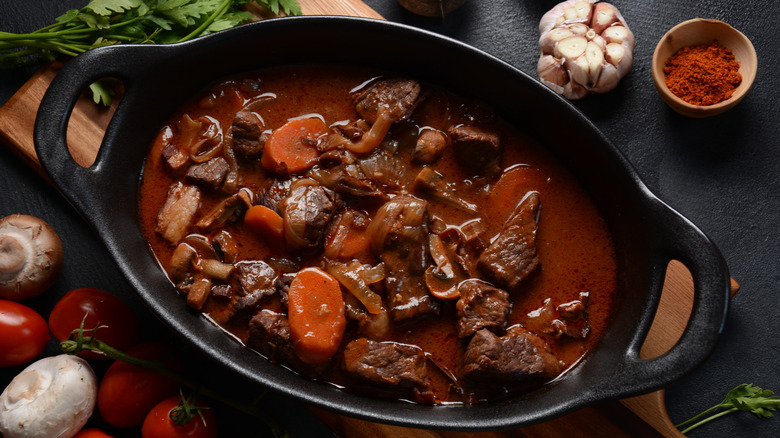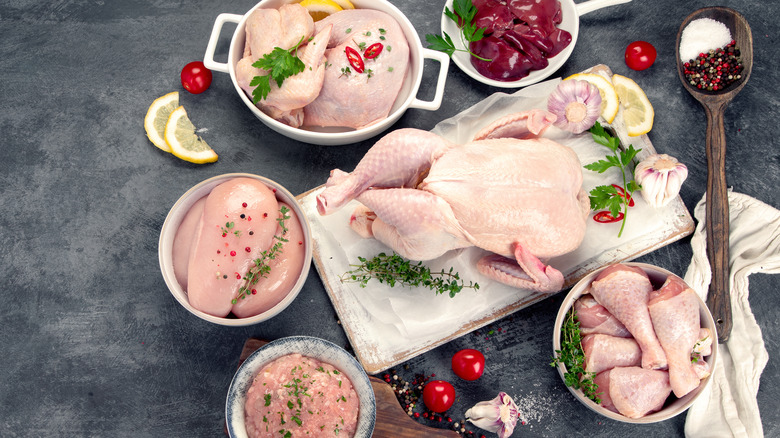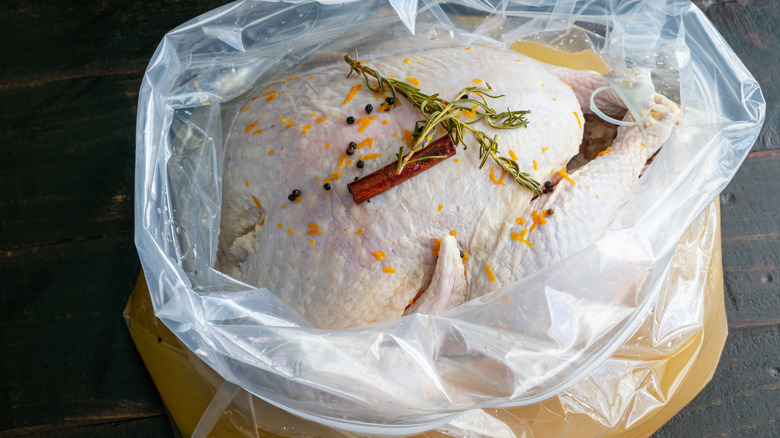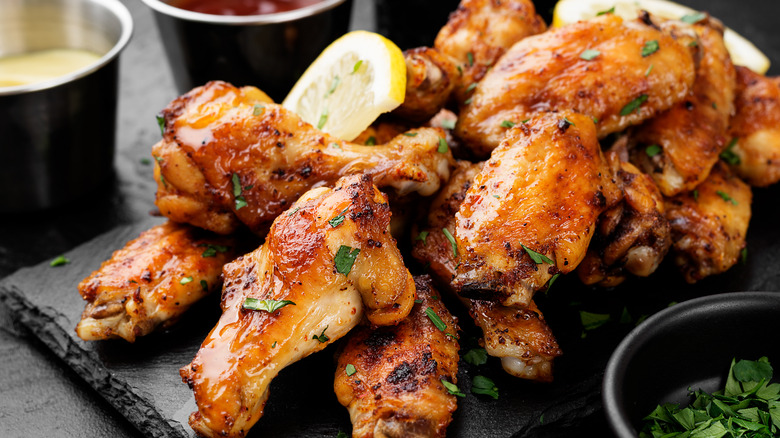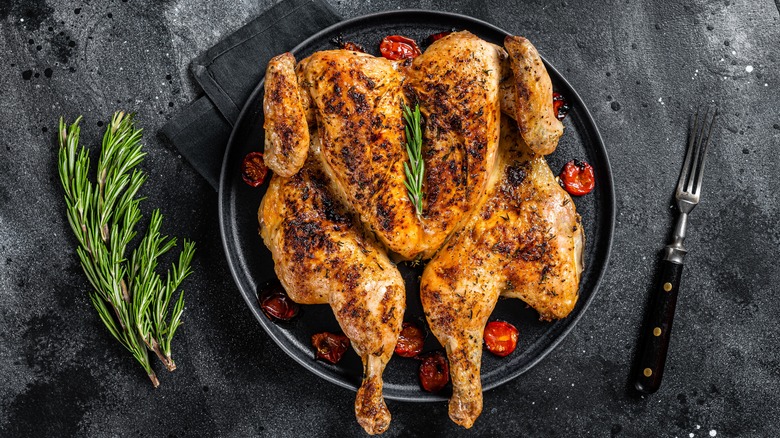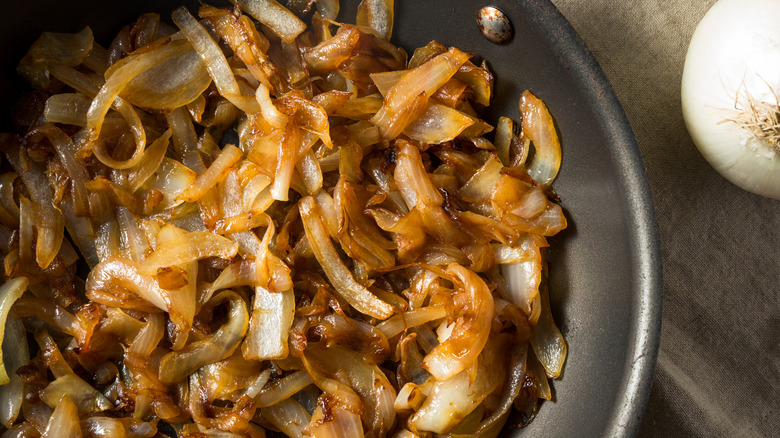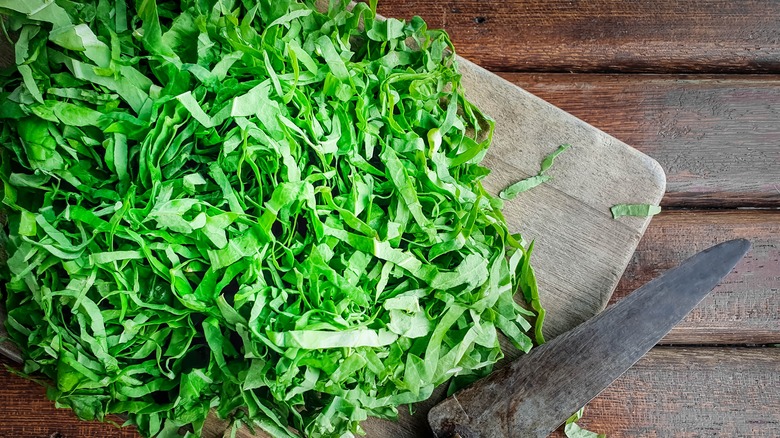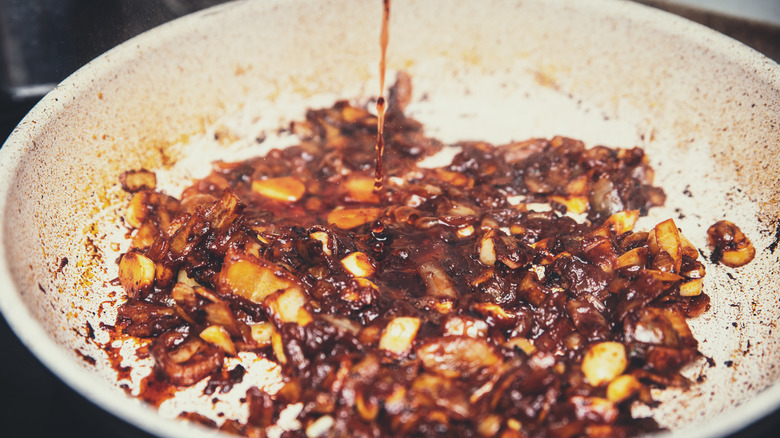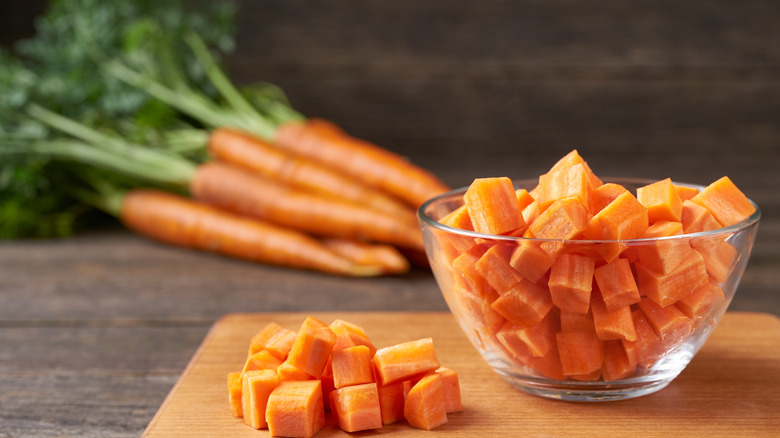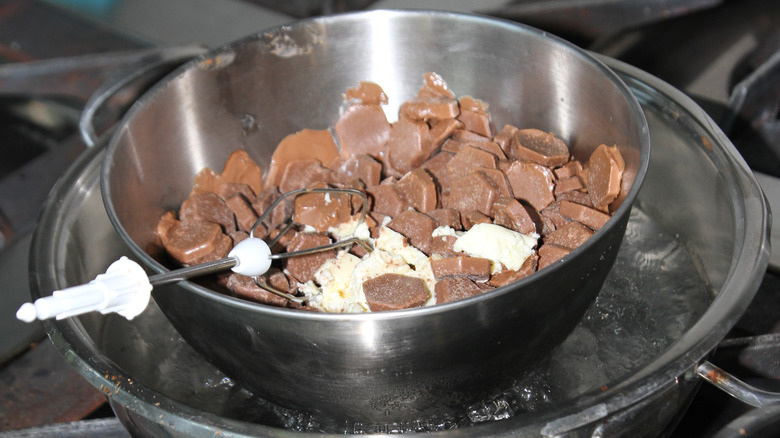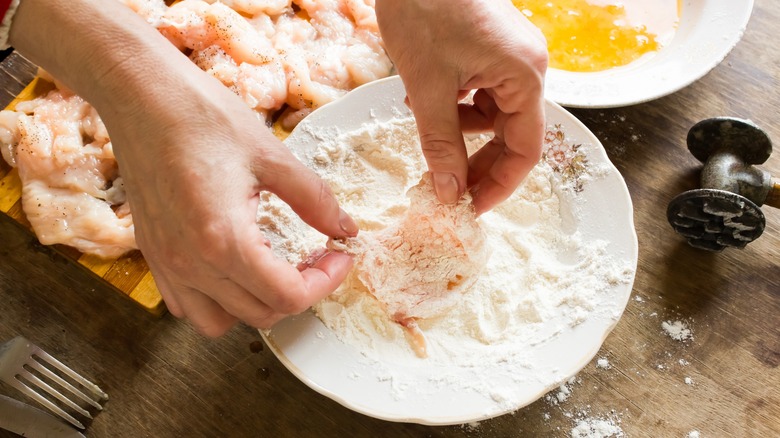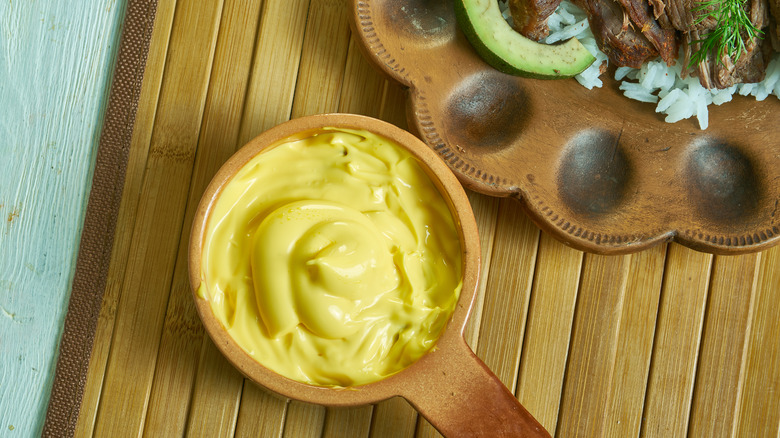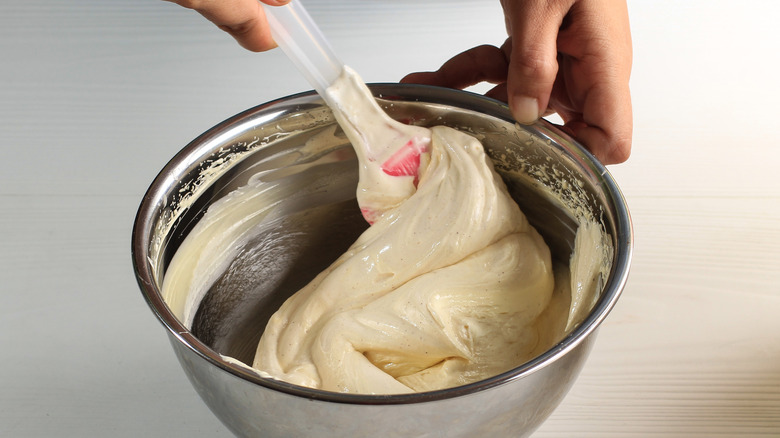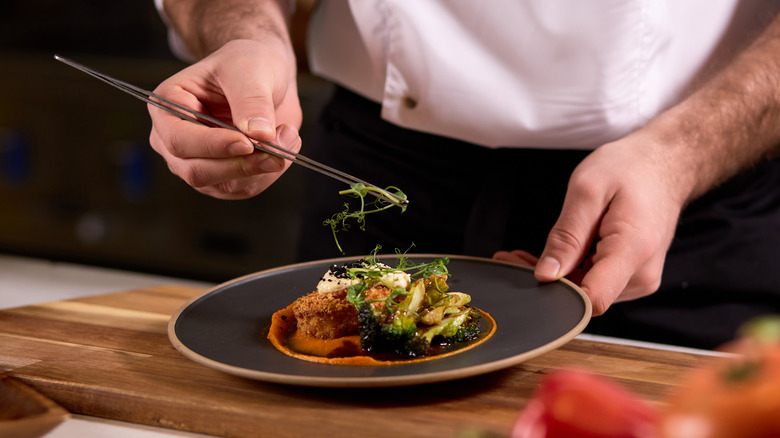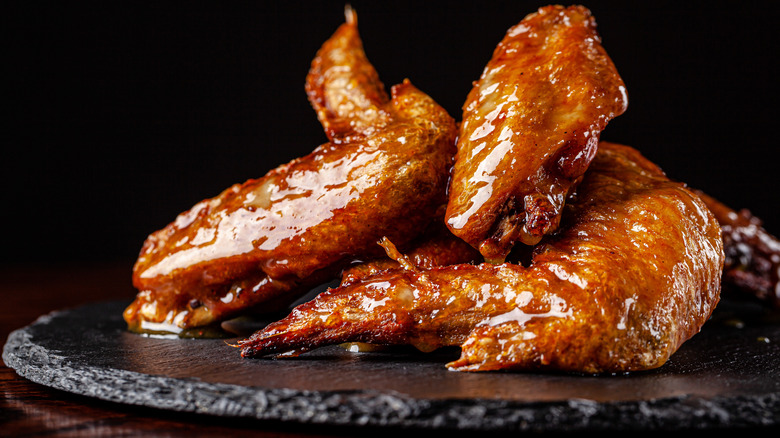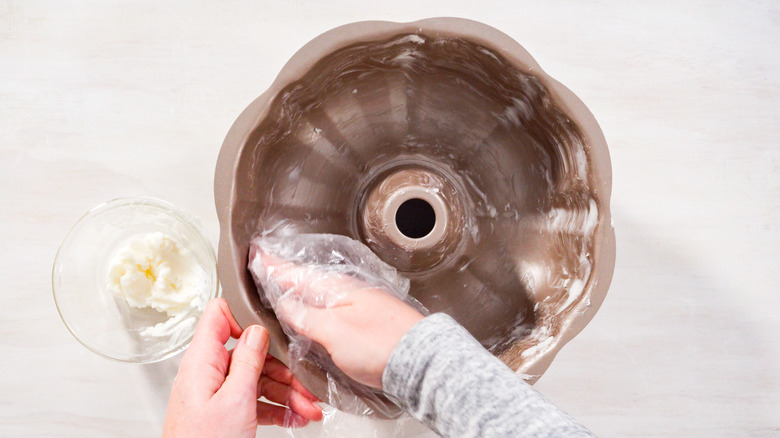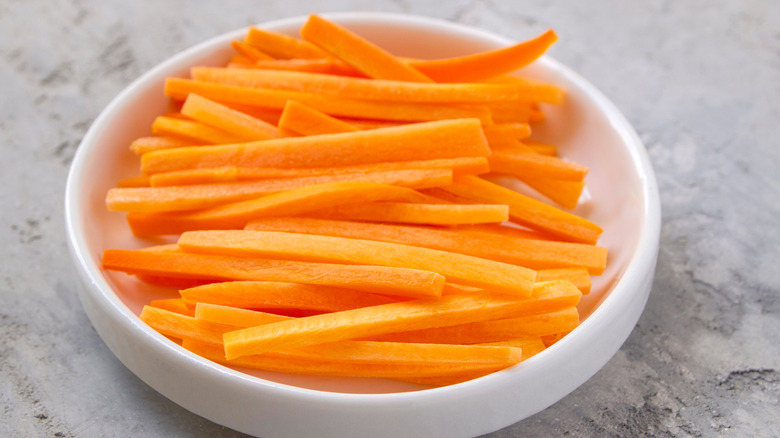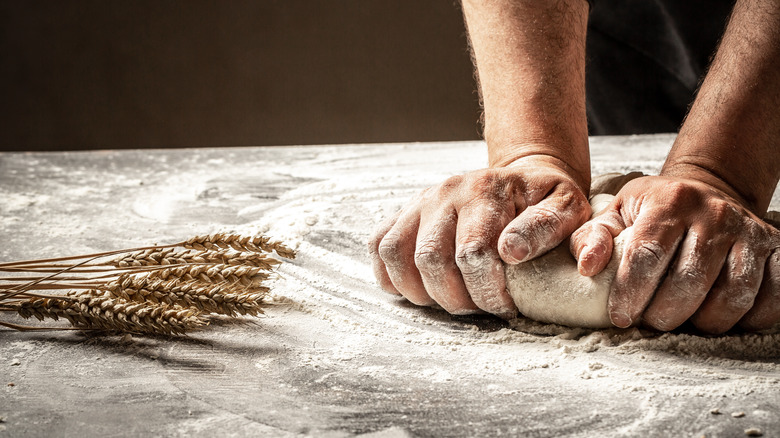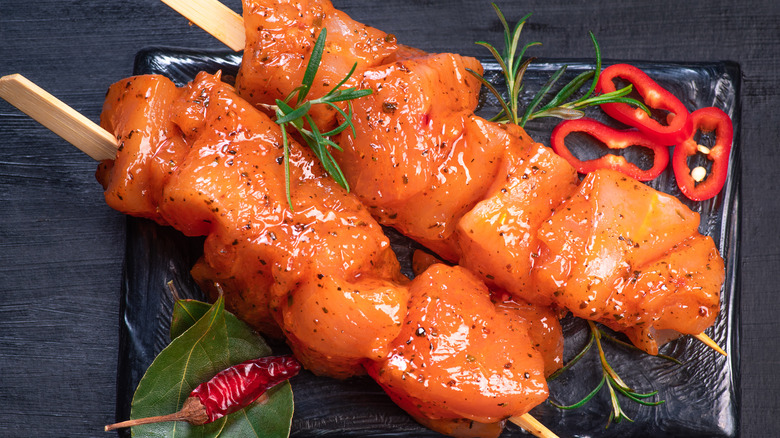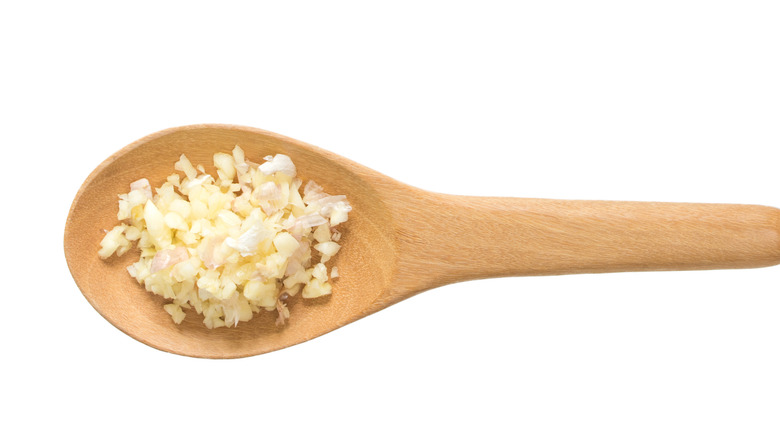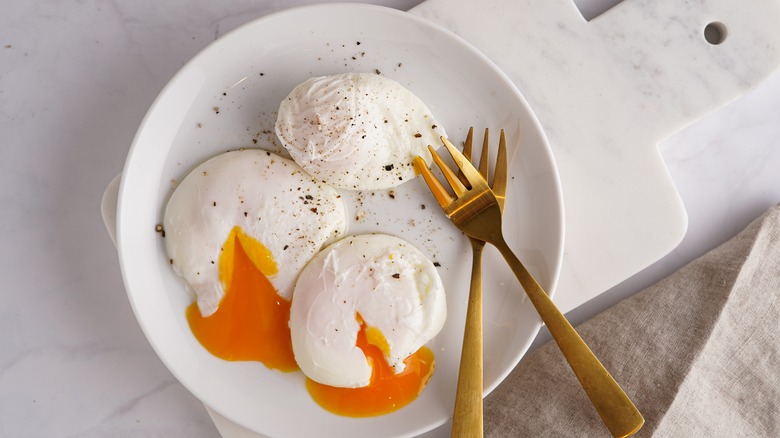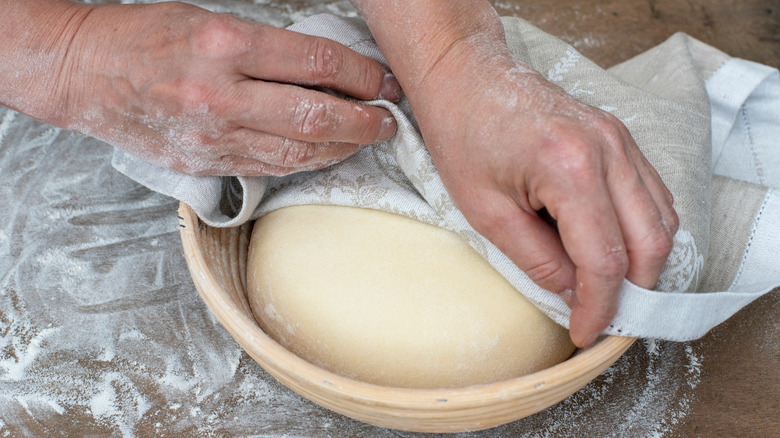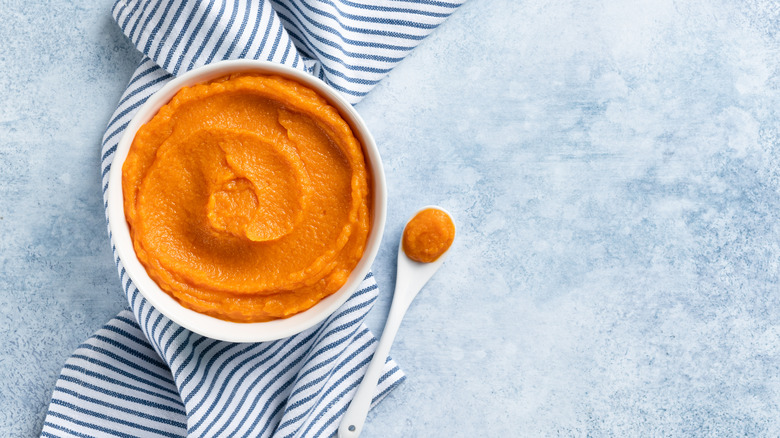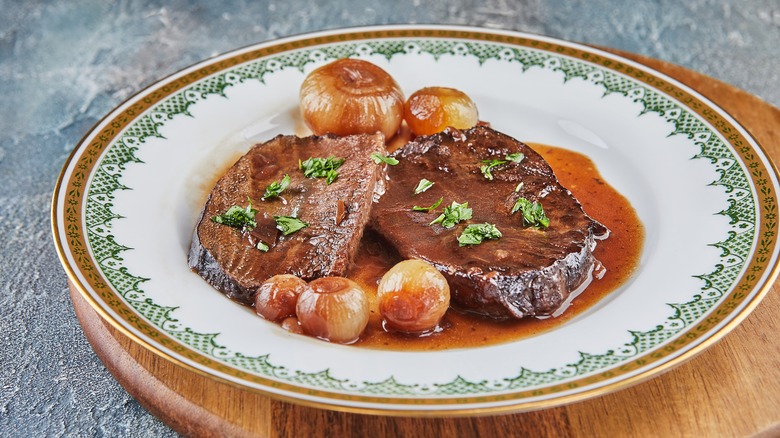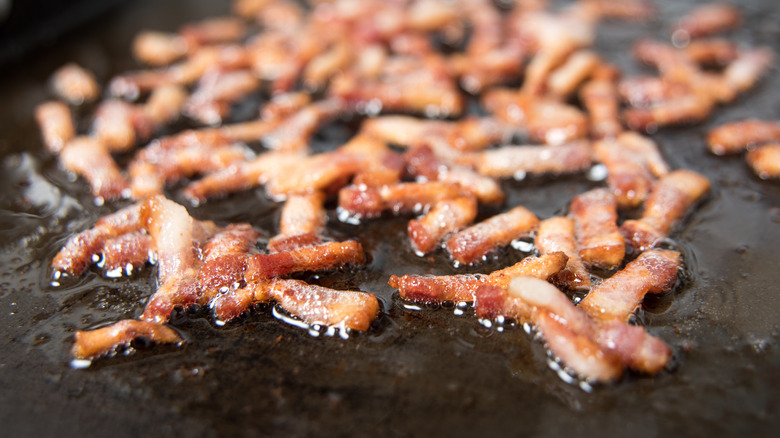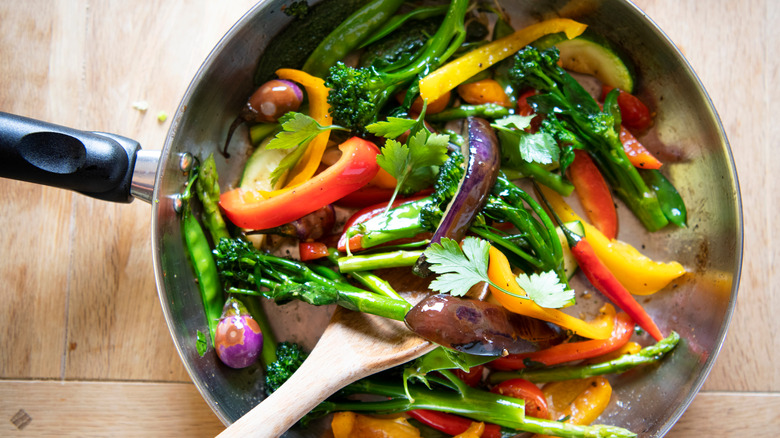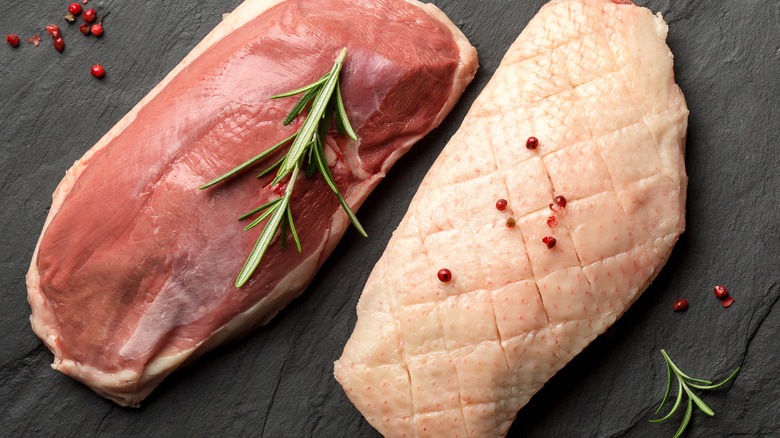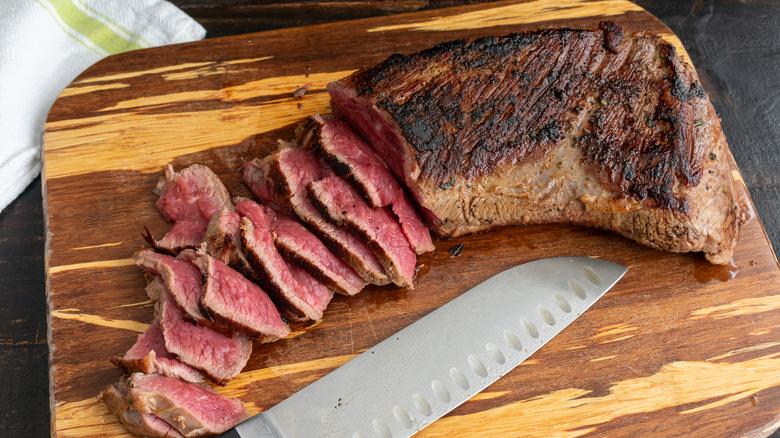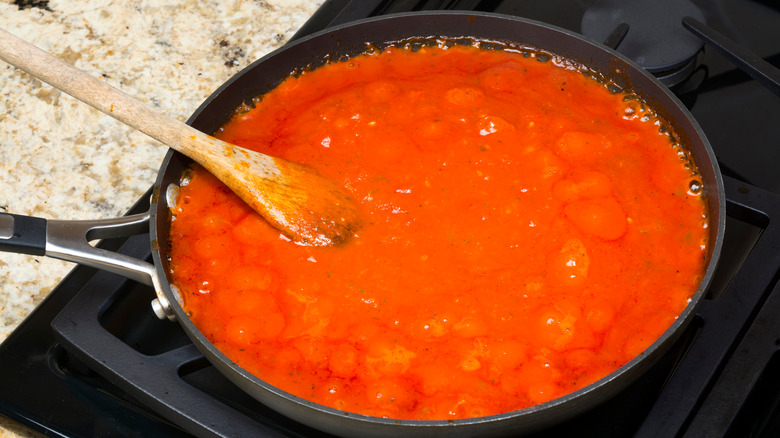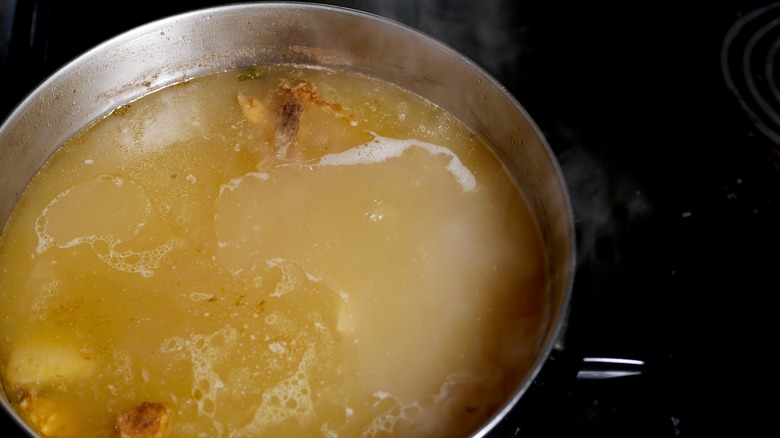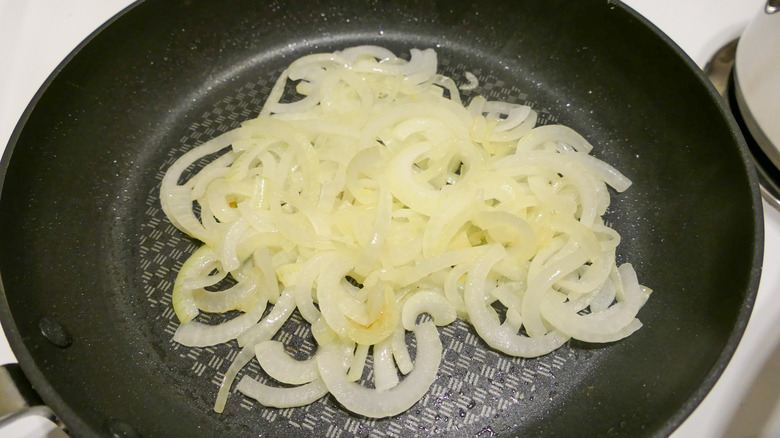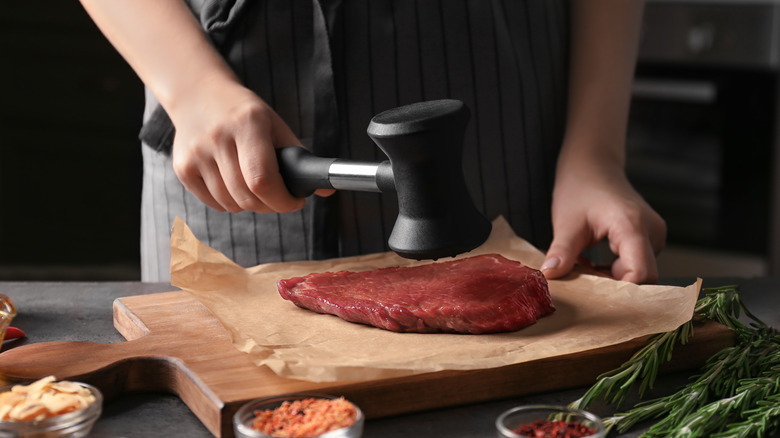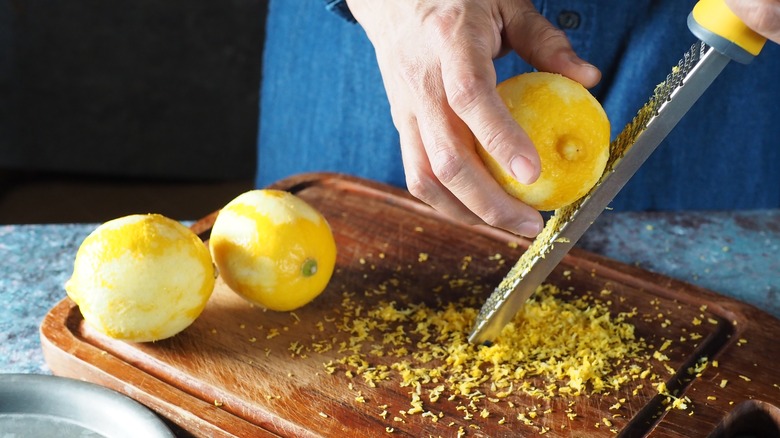40 Essential Recipe Terms You Should Know
In the age of technology always present at our fingertips, you're probably inundated with recipes. There are an inconceivable amount of recipes circulating throughout the world. No wonder it can be so difficult to choose what to cook for dinner. Do you need over 500 million salmon recipes generated in under one second in a Google search? Probably not.
In this enormous sea of content, recipe writers tend to use words that not all home cooks know. You might also see instructions with unfamiliar terms, making cooking seem even more unapproachable. The good news is that you can build your culinary knowledge to improve your cooking skills. What is the difference between simmering and poaching? What does this recipe mean by sweating instead of sautéing? To make life easier, we compiled a list of the most essential recipe terms you should know. Once you master this glossary, you will be a great cook in no time.
Al dente
Al dente is an Italian term that means "to the tooth." When a recipe calls for "al dente" pasta, you should boil the pasta until cooked through but still with a distinct bite. Cooking time on pasta will depend upon the size, shape, thickness, and even the brand, so refer to package directions to avoid overcooking.
Here's a quick tip on how you can tell when your pasta is al dente: You should still see a touch of white when you bite into a piece.
Baste
Basting is a technique where you spoon or brush liquid fat over meat during the cooking process. This helps maintain a juicy, tender piece of meat. To baste, remove the meat from the oven and pour the drippings from the bottom of the pan over top of the meat. You can use special basting tools such as a brush or bulb, but you can also get the same effect with a spoon. This technique also works great to achieve a fried egg with crispy edges.
Béchamel
One of the five mother sauces of French cooking, Béchamel (also known as "white sauce") is a creamy sauce that serves as a base for many recipes from macaroni and cheese to cream soups. You will first make a roux (a cooked mixture of fat and flour) and then slowly incorporate warm milk until it reaches a medium thickness.
Béchamel on its own is relatively plain, so you are more likely to see recipes with different ingredients added for flavor. These variations are considered to be "small sauces," meaning they are derived from a mother sauce.
Bias
What does it mean when a recipe instructs to cut on a bias? This simply signals you to slice at an angle. Instead of holding your knife perpendicular to the item you are cutting, you will angle it at 45 degrees as you slice.
This technique helps to keep meat, like steak, tender and makes it more manageable to chew. Similarly with tough fibrous vegetables like scallions and snap peas, cutting on the bias makes chewing easier.
Blanch
Blanching leafy greens before you freeze them helps to maintain color and structure. It can also reduce bitterness in vegetables like kale or broccoli rabe. Blanching is a technique where you briefly boil food before plunging it into a bowl of ice water to "shock" it and stop the cooking process. While this method is mostly used for greens and other vegetables, it can also be done with other food items, such as pasta sheets for lasagna or bones to remove impurities when making stock.
Braise
If you believe good things come to those who wait, braising exemplifies this motto. Braising involves cooking meat or vegetables in a gently simmering liquid, often for hours. Braises are most often seen with cuts of meat that got a lot of muscle activity during the animal's life. These cuts of meat (with high amounts of collagen and connective tissue) benefit from this slow and steady cooking method that breaks down the tough fibers, resulting in a tender bite.
Bone or debone
Simply put, "to bone" means to remove bones from meat. Also called deboning, this process involves separating meat from its bone structure.
A flexible boning knife is best to use, but a chef's knife will also do the trick. When boning a chicken, for example, you will follow the skeletal structure with your knife, slicing where the meat naturally separates from the bone. When done correctly, the knife will do the work for you. At times you may not find boneless cuts of meat, so you may have to perform this skill before starting a recipe.
Brine
Every Thanksgiving the conversation is renewed: To brine or not to brine the turkey? A brine is a salty mixture, often liquid, that is used to marinate meat, such as chicken. This process is said to help season and tenderize the meat. While brine is the mixture, this term also refers to the act of brining. There are two types of brine: wet and dry. A wet brine involves submerging the meat in a salty liquid, while a dry brine is achieved by coating the meat in salt to allow the seasoning to slowly diffuse throughout the meat.
Broil
Broilers are one of the most under-appreciated appliances in the kitchen. That broiler setting in your oven can give that hot off-the-grill look to meat and vegetables, or a crispy finish to a cheesy dish. If your recipe says to broil, it's worth it to take this extra step. Broilers typically reach 500 to 550 F and might have high and low settings or just an off and on mode. Just a few minutes can leave your food looking golden and crispy.
Broil could also refer to the general cooking of meats over direct flame, another word for grilling.
Butterfly
From shrimp to chicken, butterflying not only gives a nice visual effect, but it helps for quicker, more even cooking. This is a process where you slice a piece of meat along a vertical line, keeping the tissue connected by a thin strip. When spread open, the two halves create a symmetrical, butterfly-like shape. When you butterfly a whole chicken, turkey, or other poultry by removing the backbone and pressing down to flatten the bird, this is more popularly called "Spatchcock." Butterflying whole poultry can drastically cut down on roasting time and helps prevent overcooking the breast meat.
Caramelize
Caramelization is a chemical reaction that occurs when sugar is heated. Sweet, gooey caramel gets its name from this process. Recipes might use this term to describe the cooking of meat or vegetables, although the most common is onions. To caramelize onions, you need a bit of patience. It takes some time for the liquid to be drawn out of these alliums. Once this happens, the naturally occurring sugars start to break down into smaller compounds, creating that amber color associated with caramelization. This browning effect is called the Maillard reaction, and it's what gives the irresistible flavor to browned food.
Chiffonade
Chiffonade is one of those French culinary terms that can intimidate home cooks. This is just a fancy word for slicing leafy vegetables and herbs into thin strips for a shredded-like appearance. The best way to get the classic chiffonade look is to roll a stalk of leaves together and then slice them into ribbons about 1 millimeter wide. Having a sharp knife is key to getting clean cuts without mashing the leaves, especially with more tender herbs like basil.
Deglaze
Deglazing a pan is an important step in building flavor in your cooking. When you brown meat or vegetables, you probably find your pan encrusted with caramelized bits of protein or carbohydrates. That layer, called the "fond," is packed full of flavor created by the Maillard reaction. To deglaze your pan, throw a splash of wine, stock, vinegar, or even water into the pan to loosen the fond. That mixture can create the base of flavor-packed gravies or other sauces.
Dice
How you cut your vegetables can have a huge impact on your final dish. Uniform pieces will cook more evenly and at the same rate. Many recipes call for dicing vegetables for this very reason. As opposed to a rough chop, a dice is a precise knife cut. There are three standard dices: large, medium, and small with ¾ inch, ½ inch, and ¼ sized cubes, respectively. An even smaller dice at ⅛ inch cubed is called a brunoise.
Many recipe writers denote dicing vegetables without indicating a size, but the most important part is that you cut them consistently.
Double boiler
Double boilers come in handy in a variety of cooking preparations from tempering chocolate to making lemon curd and Hollandaise sauce, or anything particularly sensitive to direct heat. A double boiler is set up where a smaller pot or bowl sits inside a larger pot full of simmering water. The steam warms the smaller vessel, providing a gentler heating source.
Just be sure that the top vessel doesn't touch the water in the bottom pot to maintain that indirect heat. This is the biggest mistake to avoid when using a double boiler.
Dredge
If you have ever made fried chicken, then you have probably performed the act of dredging. This is a light coating of flour that results in a crisp crust on your fried chicken. A light hand is all that is needed, as too much flour can leave you with soggy, greasy meat. Be sure to season the flour with salt, pepper, and spices of your choosing. Some people will also include corn starch in their dredge, as it adds a nice crunch.
Dredging is also the first step when doing a traditional breadcrumb coating (before dipping in egg wash and rolling in breadcrumbs).
Emulsion
The word emulsion sounds like a science project. In a homogenous mixture of two liquids that don't usually mix, such as oil and vinegar, emulsions are created through vigorous whisking. However, this only creates temporary emulsions. You often need a substance to stabilize it, called an emulsifier.
Dijon mustard is commonly used in vinaigrettes to prevent the dressing from separating. A number of sauces, from hollandaise to mayonnaise use egg yolks, are emulsified to create creamy, uniform mixtures. You can also perform a process the French call "monter au beurre," or mounting. This involves whisking cold butter into a hot sauce to emulsify it.
Fold
It can take time to whip up egg whites into stiff peaks, especially when whisked by hand. You don't want your efforts to be wasted by immediately deflating your light, airy mixture. This is where folding comes into play. This technique involves taking a small portion of the whipped egg whites (about a third or less) and stirring them into a batter to loosen it. You'll then add the next third and use a rubber spatula to incorporate the egg whites using a flipping or "folding" motion. Repeat with the remaining egg whites, but be sure not to stir to maintain as many air pockets as possible.
Garnish
Instagram has turned the art of plating into a sport. The days of a little pile of curly parsley and lemon wedges have gone away. Now, everyone wants to garnish like a pro.
A garnish is anything used to embellish a dish. From simple herbs to colorful flowers, that added flare to the plate can change how people experience your food. While the primary purpose is to enhance presentation, garnishes should always be edible and, ideally, contribute to the overall flavor profile of your meal.
Glaze
Sleek, shiny, glossy. All words to describe the glorious glaze. A smooth coating on food in both savory and sweet preparations, glazes give the perfect sheen for a stunning presentation. Though there is no single way to make a glaze, it most often involves reducing some combination of sugar and liquid. Many sauces and marinades can be cooked down into a glaze. Just keep an eye on the heat. Because of the sugar, glazes can easily burn.
Grease
While it can have bad connotations (from motor oil for your car to an "unhealthy" thing to avoid), grease is any thick, oily substance. In cooking, the most commonly used types are butter, shortening, and lard, plus a myriad of cooking oils. They might be used as an ingredient in a recipe. They can also be used simply in their liquified state as a cooking medium, like in deep-frying and poaching.
They also come in handy when you need to create a nonstick surface. The act of greasing your pan is essential, especially in baking, as it prevents cakes and other foods from getting stuck in the baking dish.
Julienne
Another French culinary term that makes food sound fancy, julienne is a classic knife cut. This technique involves slicing vegetables into thin strips about 3 inches long. First, peel the vegetables, then cut them crosswise into your desired length before slicing each stick about ⅛ inch thick. This matchstick-shaped cut is commonly seen with carrots and celery for crudité, the French name for a vegetable platter. They are also the ideal size for vegetables in a fresh spring roll.
Knead
Unless you missed the bread craze of the past few years, you know that bread making is a time-consuming and finicky process. One of the most important steps is kneading; the process of mixing dough by stretching and folding until it forms a smooth and cohesive mass. Working the dough is crucial for the development of gluten, the proteins found in wheat, barley, and rye that gives bread its structure and consistency. While you can use an electric mixer, the key to avoiding dense and chewy loaves is always kneading bread dough by hand.
Marinate
If you want to boost the flavor of your meat, marinating is a quick and easy step to take. This is the process of soaking meat in a flavorful liquid (called a marinade) before cooking. Marinades contain three main components: acid, fat, and flavorings. The acid can come from any lower pH food from citrus and other fruits to vinegar to yogurt, and it helps to tenderize the meat. However, don't leave the meat in a marinade for too long, or you might end up with a mushy or tough product.
Mince
Is there a difference between a fine dice and a mince? These knife cuts look very similar, but the distinction is in size. A brunoise (fine dice) is made by cutting julienne strips into ⅛-inch cubes. Anything smaller than a fine brunoise is considered a mince. In terms of recipes, mincing typically refers to cutting food into very small pieces, such as very finely chopped garlic. In the U.K., mince is the word they use for ground meat.
Parboil
What's not to love about roasted potatoes? With tender centers and crispy edges, this side dish has captured many hearts. To get a perfect consistency, you should always boil potatoes before roasting them to prevent them from drying out in the oven.
This process of boiling food for a short period of time to partly cook is called parboiling, and it has great benefits. Parboiled rice, which is readily available at supermarkets, cuts down on cooking time and is less sticky. Plus, for bitter vegetables like Brussels sprouts, parboiling can reduce astringency before roasting and also helps them cook more evenly.
Poach
Poaching is a moist-heat cooking method that involves submerging food in liquid over low heat, which slowly cooks the food. That liquid should be maintained between 160 and 180 F and should not reach a simmer. This method is ideal for delicate food items that could easily fall apart while boiling, such as eggs and fish.
Eggs are traditionally poached in water with salt and vinegar. Other foods, like fish, might be poached in anything from wine to stock to milk. The poaching liquid not only adds flavor to your food but also helps maintain moisture.
Proof
Yeast is what gives bread its fluffy, airy texture. Without it, bread would just be dense, unappetizing blocks. You wouldn't see that beautiful rise in your loaves. This process is called proofing (or proving), and it is caused by the fermentation of yeast. As a living organism, the yeast releases gas causing air bubbles that lift and lighten the dough. While proofing is sometimes mistaken as just the final rise after the dough has been shaped, this term refers to each rise in the process from bulk fermentation (the first rise) to the shaped proof.
Puree
Purees aren't just for babies. Restaurant menus are stocked full of these smooth, velvety mashes. All you need is a high-speed blender to make your own like the pros.
Many vegetables, fruits, and legumes can be turned into a puree, but the best results are with starchy items like potatoes, carrots, winter squash, and beans. Other foods can be pureed (the act of turning food into a thick liquified state), but very fibrous foods, like broccoli, will not result in a smooth, luscious texture.
Reduce
Reducing is the process of manipulating the consistency of a substance by decreasing the amount of liquid present. To reduce a sauce, for example, you must simmer down the liquid to make it thicker. The substance that remains is called a reduction, such as a balsamic reduction, and they are often served as sauces for meats (and sometimes desserts).
Reducing helps to intensify and concentrate flavors. Anything with naturally occurring sugars, like wine, will become sweeter. The meat flavor in stocks will become more forward. Make sure you slowly simmer over low heat and do not let it come to a boil.
Render
If you have ever cooked bacon, you know it can leave a pool of fat in the pan. Particularly fatty pieces of meat, like bacon and duck breast, render during cooking. Rendering is the process of melting and clarifying fat and separating it from the solid parts. That rendered fat serves to essentially fry the meat. That is how bacon gets so crispy.
Rendered fat can serve many purposes. Duck fat is a popular fat used in making french fries. Lard, which is clarified pig fat, can also add a unique flavor when used in baked goods like biscuits.
Roux
With just two components, a roux is a cooked mixture of equal parts fat and flour. The fat can be any form of grease, although butter is traditional in many French dishes. Sauces like Béchamel begin with a roux, and they act as a thickener.
Many roux are differentiated by color and cooking time, ranging from a white roux (2-to-4 minutes) to a dark roux (30-to-45 minutes). The longer the roux cooks, the deeper the flavor will be. However, if you do not cook white roux for at least two minutes, you will get an unpleasant raw flour taste.
Sauté
Sautéing is a technique used in everyday cooking. It involves frying pieces of meat or vegetables quickly in a small amount of fat. This word is derived from the French word "sauter" which means "to jump" (via Merriam-Webster).
Sauté pans also get their name from this process. These are shallow, straight-sided pans that have a greater surface area than skillets or frying pans. However, those pans can also be used to sauté foods. Not everyone has room in their home for a specialized pan for each cooking technique.
Score
We've already covered the benefits of rendering duck fat, but if you skip this important step, you could be missing out on some of that luscious fat. There is a thick layer of fat between duck meat and the skin. If you want crispy, crackling skin on your duck breast, you need to score the skin by slicing slits in the skin in a crisscross pattern. This helps the fat underneath the skin to render during cooking, providing a pool of fat to fry and crisp the skin.
Sear
Chef Anne Burrell has a saying: Brown food tastes good. She is describing the Maillard reaction, where the browning of foods like meat and vegetables results in a deeper concentration of flavor. When cooking meats, the best way to get that caramelization is through searing. This is the process of creating a crisp, brown crust on meat through quick contact with high heat. Make sure to pat your meat dry very well. Meat will not sear properly if a liquid is present. You'll end up steaming it instead of getting that golden brown color.
Simmer
In between poaching and boiling, simmering is the process of cooking foods submerged in liquid just below the boiling point. The liquid should be maintained at roughly 185 to 205 F over low heat.
A simmer will allow sauces and soups to cook down at a much slower rate than boiling, and you will have better control over how much the liquid reduces. To get to a simmer, many recipes instruct to first bring the pot to a boil before reducing the heat. This cuts down drastically on how long it will take for the contents of your pot to reach a simmer.
Skim
When making stocks and soups, you might find that a layer of scum and fat has formed on top of the liquid. These impurities are should be removed, or skimmed, from the top of the pot. You can use a ladle or large spoon to skim, but there is a trick for expertly skimming the fat off stews and soups. Run a handful of ice cubes wrapped in a paper towel over the surface of the pot. This will quickly harden the fat, making it easier to remove.
Sweat
As opposed to sautéing, sweating vegetables involves cooking vegetables over low heat to soften them. With sweating, there should be no color present. Keeping a gentle heat will help prevent caramelization. This technique is typically used when you want to draw out the flavors of the vegetables without overpowering the rest of the dish. A lot of recipes start with sweating some mirepoix, a mixture of aromatics (traditionally two parts onion to one part each of carrots and celery) before developing other flavors.
Tenderize
A meat tenderizer isn't just for taking out your aggression on food. Those mallets are used to pound and tenderize meat, a process that reduces the toughness of proteins. Tenderizing in this way not only cuts down on cooking time (as it thins out the muscle fibers,) but it can also leave your meat juicier and more enjoyable.
The mallet is just one way to tenderize meat. Other tricks for tenderizing meat include using baking soda or acidic ingredients like pineapple to break down those tough muscle fibers.
Zest
Citrus peels can have many functions in cooking. The white part, the pith, is very bitter and unpleasant to consume. It's the colorful outer layer, called the zest, that provides a burst of citrus essence. The zest is said to have an even stronger flavor than the juice.
Whether lemons, limes, oranges, or grapefruit, using the zest can add great depth of flavor to curds, dressings, pasta sauces, and so much more. The best way to get all the zest of the fruit without hitting the pith is by using a Microplane or other rasp grater.

